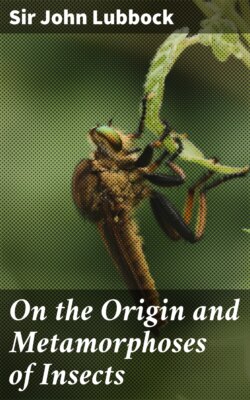Читать книгу On the Origin and Metamorphoses of Insects - Sir John Lubbock - Страница 6
На сайте Литреса книга снята с продажи.
CHAPTER I. THE CLASSIFICATION OF INSECTS.
ОглавлениеAbout forty years ago the civil and ecclesiastical authorities of St. Fernando in Chili arrested a certain M. Renous on a charge of witchcraft, because he kept some caterpillars which turned into butterflies.1 This was no doubt an extreme case of ignorance; it is now almost universally known that the great majority of insects quit the egg in a state very different from that which they ultimately assume; and the general statement in works on entomology has been that the life of an insect may be divided into four periods.
Thus, according to Kirby and Spence,2 “The states through which insects pass are four: the egg, the larva, the pupa, and the imago.” Burmeister,3 also, says that, excluding certain very rare anomalies, “we may observe four distinct periods of existence in every insect—namely, those of the egg, the larva, the pupa, and the imago, or perfect insect.” In fact, however, the various groups of insects differ widely from one another in the metamorphoses they pass through: in some, as in the grasshoppers and crickets, the changes consist principally in a gradual increase of size, and in the acquisition of wings; while others, as for instance the common fly, acquire their full bulk in a form very different from that which they ultimately assume, and pass through a period of inaction in which not only is the whole form of the body altered, not only are legs and wings acquired, but even the internal organs themselves are almost entirely disintegrated and re-formed. It will be my object, after having briefly described these changes, to throw some light on the causes to which they are due, and on the indications they afford of the stages through which insects have been evolved.
The following list gives the orders or principal groups into which the Class Insecta may be divided. I will not, indeed, here enter upon my own views, but will adopt the system given by Mr. Westwood in his excellent “Introduction to the Modern Classification of Insects,” from which also, as a standard authority, most of the figures on Plates I. to IV., when not otherwise acknowledged, have been taken. He divides insects into thirteen groups, and with reference to eight of them it may be said that there is little difference of opinion among entomologists. These orders are by far the most numerous, and I have placed them in capital letters. As regards the other five there is still much difference of opinion. It must also be observed that Prof. Westwood omits the parasitic Anoplura, as well as the Thysanura and Collembola.
